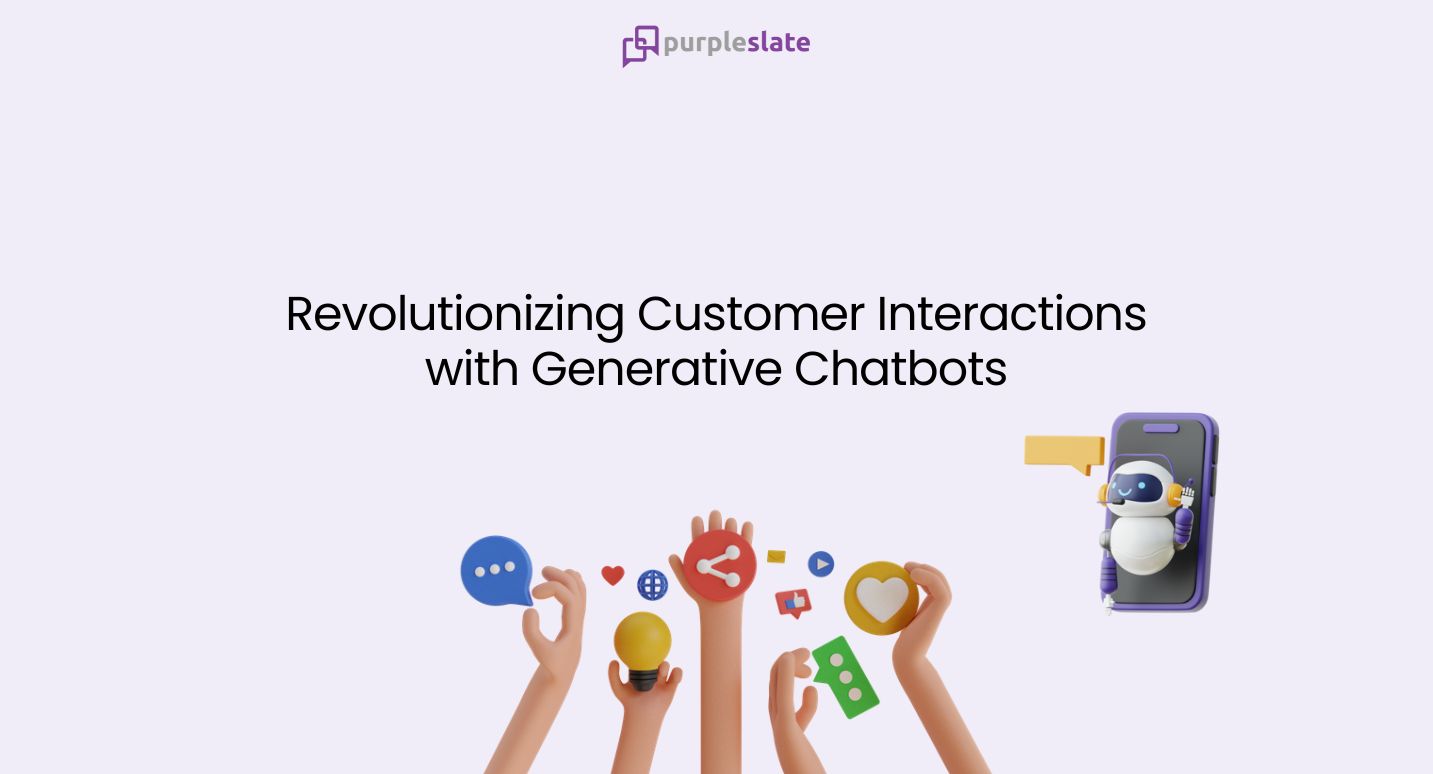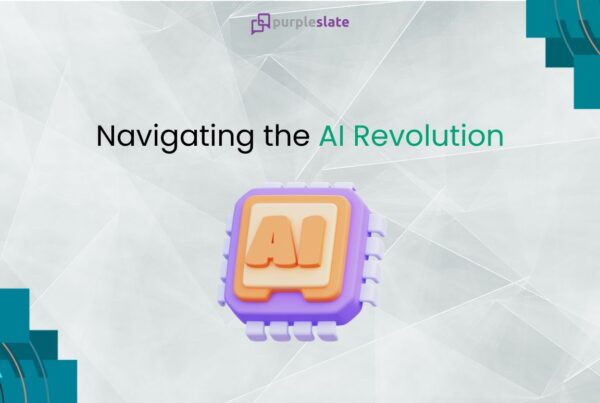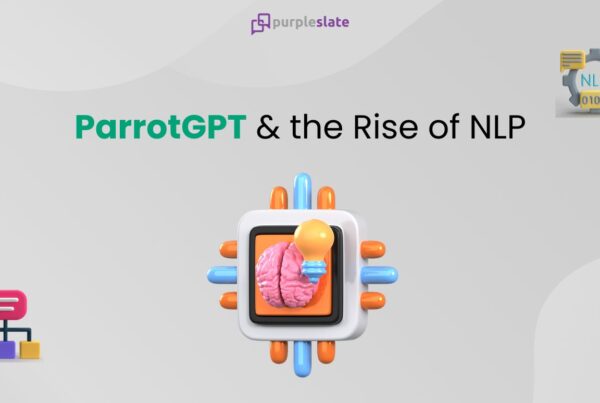
Introduction
One of the key areas of focus for businesses is enhancing customer experiences through innovative technologies. Chatbots have emerged as a valuable tool for engaging with customers, streamlining operations, and delivering personalized interactions. However, traditional chatbots often fall short in creating genuine delight and engaging customers in meaningful conversations. In this blog, we’ll explore how generative chatbot technology is revolutionizing customer interactions and how ParrotGPT is leading the way in this transformative journey.
Understanding the Limitations of Traditional Chatbots
Traditional chatbots, while efficient in handling routine inquiries and tasks, often struggle to create authentic and engaging interactions with customers. These chatbots rely on predefined responses and keyword matching algorithms, resulting in static and impersonal conversations. Moreover, they lack the ability to understand context, intent, and nuances of language, leading to disjointed and frustrating experiences for customers.
Traditional chatbots are limited by their reliance on rigid decision trees and rule-based logic, which can only accommodate a predefined set of scenarios and responses. This often results in a lack of flexibility and adaptability, making it challenging to address the diverse needs and preferences of customers in real-time.
Furthermore, traditional chatbots are unable to grasp the subtleties of human language, such as sarcasm, ambiguity, and colloquial expressions, leading to misinterpretations and misunderstandings. However, they faced several limitations that hindered their effectiveness in delivering engaging and meaningful interactions with customers.
Rigid Response Framework: Traditional chatbots operated within a rigid response framework, where responses were predetermined based on specific keywords or phrases. This limited their ability to understand the context and intent behind user messages, resulting in generic and often irrelevant responses.
Limited Natural Language Understanding: Traditional chatbots struggled to comprehend the nuances of human language, such as sarcasm, ambiguity, and colloquialisms. As a result, they often misinterpreted user inputs, leading to misunderstandings and frustration among customers.
Lack of Contextual Awareness: Traditional chatbots lacked contextual awareness, meaning they were unable to maintain continuity in conversations or remember past interactions. Each message was treated in isolation, without consideration for the broader context of the conversation.
Inflexible Decision Trees: Traditional chatbots relied on rigid decision trees to guide interactions, limiting their adaptability to new scenarios or user queries outside the predefined scope. This made it challenging to handle complex inquiries or address unique customer needs effectively.
Static and Impersonal Responses: Due to their reliance on predefined responses, traditional chatbots often delivered static and impersonal interactions that failed to resonate with customers on a personal level. This diminished the overall user experience and hindered efforts to build rapport and trust with users.
Enter Generative Chatbot Technology
Generative chatbot technology represents a significant leap forward in the field of conversational AI, offering a solution to the limitations of traditional chatbots. Unlike their predecessors, generative chatbots employ advanced natural language processing (NLP) and machine learning techniques to generate dynamic responses in real-time, enabling more engaging and human-like conversations with users.
Dynamic Response Generation: Generative chatbots can generate responses on the fly, rather than relying on pre-programmed scripts or decision trees. This allows them to adapt to a wide range of user inquiries and scenarios, providing more relevant and contextually appropriate responses. By analyzing patterns in user input and learning from previous interactions, generative chatbots can generate responses that are tailored to the specific needs and preferences of each user.
Contextual Understanding: Generative chatbots excel in understanding the context and intent behind user messages, allowing for more natural and seamless conversations. Through advanced NLP techniques such as sentiment analysis, entity recognition, and language modeling, generative chatbots can grasp the underlying meaning of user inputs and respond accordingly. This contextual understanding enables them to maintain continuity in conversations and provide more personalized assistance to users.
Personalization and Empathy: One of the defining features of generative chatbots is their ability to personalize interactions and demonstrate empathy towards customers. Through sentiment analysis and tone detection algorithms, generative chatbots can adapt their responses based on the emotional state of the customer, offering empathetic support and guidance when needed.
Human-like Conversations: One of the key strengths of generative chatbots is their ability to mimic human-like conversations. By leveraging sophisticated language models trained on vast datasets of human dialogue, generative chatbots can produce responses that sound natural, conversational, and authentic. They can understand and generate complex sentences, incorporate humor and colloquialisms, and adapt their tone and style to match the user’s preferences. This human-like conversational ability enhances the user experience and fosters a sense of rapport and trust between the user and the chatbot.
Continuous Learning and Improvement: Generative chatbots continuously learn from user interactions and feedback, refining their responses and improving their conversational capabilities over time. Through techniques such as reinforcement learning and transfer learning, generative chatbots can adapt to new domains and scenarios, expanding their knowledge and expertise with each interaction. This iterative learning process ensures that generative chatbots remain up-to-date and responsive to evolving user needs and preferences.
Generative chatbot technology represents a significant advancement in conversational AI, offering more dynamic, contextually aware, and human-like interactions compared to traditional chatbots. By leveraging advanced NLP and machine learning techniques, generative chatbots can deliver personalized, engaging, and seamless conversations that enhance the user experience and drive business outcomes.
ParrotGPT: Your No-Code Chatbot Builder
Say hello to ParrotGPT, our revolutionary no-code chatbot builder that empowers businesses to create, test, and deploy generative conversational chatbots with ease. With ParrotGPT, you can harness the power of generative chatbot technology without the need for complex coding or technical expertise. Here’s how ParrotGPT can help transform your customer interactions:
Effortless Chatbot Creation
With ParrotGPT, building a generative conversational chatbot is as simple as filling out a form. Our intuitive interface guides you through the process, allowing you to define conversation flows, customize responses, and train your chatbot without writing a single line of code.
Real-Time Training and Optimization
ParrotGPT continuously learns from customer interactions and feedback, refining its responses and improving its conversational capabilities over time. Our real-time training and optimization features ensure that your chatbot remains up-to-date and responsive to evolving customer needs.
Seamless Deployment Across Channels
Whether it’s website chat widgets, messaging platforms, or voice assistants, ParrotGPT enables seamless deployment of your chatbot across multiple channels. Reach customers wherever they are and engage with them in their preferred communication channel, enhancing accessibility and convenience.
Robust Analytics and Insights
Gain valuable insights into customer interactions and behavior with ParrotGPT’s robust analytics and reporting tools. Track key metrics such as engagement rates, conversion rates, and customer satisfaction scores to measure the effectiveness of your chatbot and identify areas for improvement.
Conclusion
Generative chatbot technology represents a paradigm shift in customer interactions, offering businesses the opportunity to create genuine delight and engagement through personalized, empathetic, and humanized conversations. With ParrotGPT, businesses can harness the power of generative chatbots to revolutionize their customer experiences and drive sustainable growth in the digital age. Embrace the future of conversational AI with ParrotGPT and unlock the full potential of your customer interactions.




